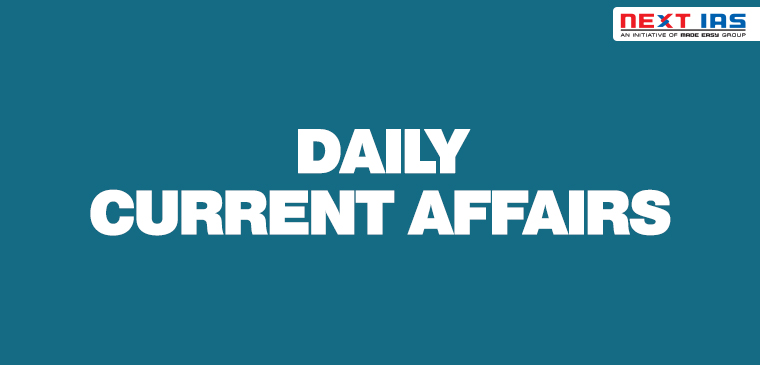
In news
A table-top war-gaming exercise was held recently among the three services of the armed forces (Navy, Army and Airforce).
About
- The aim of this exercise was to evolve a consensus among the three services on the reorganisation of the forces into integrated tri-service theatre commands and fine-tune the model.
Integrated Theatre Command
- It is a unified command in which the resources of all the services are unified under a single commander looking at a geographical theatre.
- It means that a single military commander, as per the requirements, will have the resources of the Army, the Navy and the Air Force to manage a security threat. He will not be answerable to individual service.
- The commander of a joint command will have the freedom to train and equip his command as per the objective and will have logistics of all the services at his beckoning.
- The three services will retain their independent identities as well.
- A committee headed by Lieutenant General D B Shekatkar had earlier recommended three new commands: Northern, for China; Western, for the Pakistan border’ and Southern, for maritime security.
Integrated vs Jointness
- Jointness means that while the 3 Services progress and develop in their respective spheres with their independent identity, they function together and so coordinate their operations in war.
- Integrated Commands, on the other hand, seek to merge individual service identities to achieve a composite and cohesive whole.
Advantages
- Better acclimatisation of troops in the given battlespace for operational efficiency.
- Training needs and administrative requirements of the troops can be better understood for specialization and conducting drills.
- Quick mobilization of troops is possible for the high-intensity war-like situation.
- The allocation of military hardware can become theatre specific and result in optimisation of the resources.
- Unified command will allow for prompt and precise decision making and remove hierarchical redundancies.
Disadvantages
- Faraway lands war and medium to high-intensity wars are a distant possibility.
- With an increased communication network, the interaction between the three organizations is easy and can plan without much consideration of spatial distance, so there is no need for the new organisation.
- Domain knowledge of integrated force commander is likely to be limited in respect to the other two services components under his command.
- Besides, interoperability of troops and equipment from dormant sectors to the active areas during the war will be difficult and less effective because they would have been trained and equipped specifically to their primary sector of responsibility.
- Another serious challenge that could be faced is that the concept of a theatre command may promote a sense of “fighting battles, rather than fighting a war”, which in turn may reduce our ability to either win a battle or the war.
Current Command Structure in India
- The current structure of the armed forces includes 17 different commands from Army, Navy and Airforce.
- Each command is headed by a 4-star rank military officer.
- India only has two tri-service commands. The first one is known as the Andaman and Nicobar Command (ANC) created in 2001. It is led by service chiefs on a rotational basis.
- The second is a functional command (not overseeing a particular geographical location) called the Strategic Forces Command. The SFC (Strategic Forces Command), looks after the delivery and operational control of the country’s nuclear assets. It was created in 2003.
Recent Reforms in the Defense
- Chief of Defense Staff:
- The CDS is the highest military office that oversees and coordinates the working of the three Services.
- The CDS will also head the Department of Military Affairs (DMA) to be created within the Ministry of Defence (MoD) and function as its Secretary.
- CDS will give single-point military advice to the government, bringing about jointness in “operations, logistics, transport, training, support services, communications, repairs and maintenance of the three Services and will act as the Principal Military Adviser to Defence Minister on all tri-Services matters.
- The CDS would not exercise any military command over the three Service Chiefs but will provide impartial advice to the political leadership.
- The CDS will also be a member of the Defence Acquisition Council chaired by the Defence Minister and Defence Planning Committee chaired by the NSA and will also function as the ‘Military Adviser to the Nuclear Command Authority.
- Department of Military Affairs:
- It is headed by the Chief of Defence Staff (CDS) and work exclusively on military matters that will fall within the purview of the DMA. Earlier, these functions were the mandate of the Department of Defence (DoD).
Experience in Other Countries
- Several major militaries in the world have deployed integrated theatre commands. China’s People’s Liberation Army has five theatre commands. Its Western Theatre Command is responsible for India. The US Armed Forces have 11 unified commands, of which seven are geographic and four functional commands.
- The Changing Dynamics of national security which, now encompasses cyber, automation and such new challenges, cannot be solved by a disjointed general and MoD labyrinth but rather a clear and robust structure that should quickly respond to an emergent situation.
Source: TH
Previous article
Manual Scavenging
Next article
Facts in News